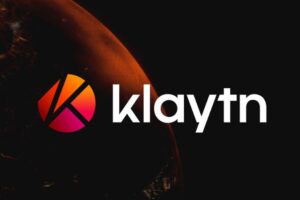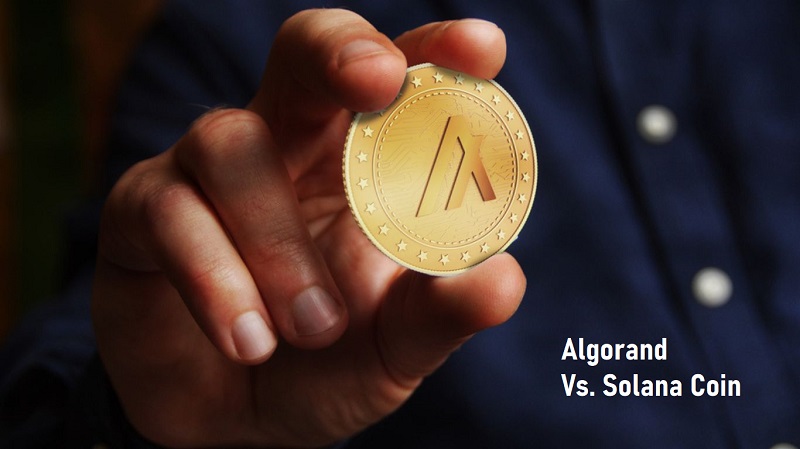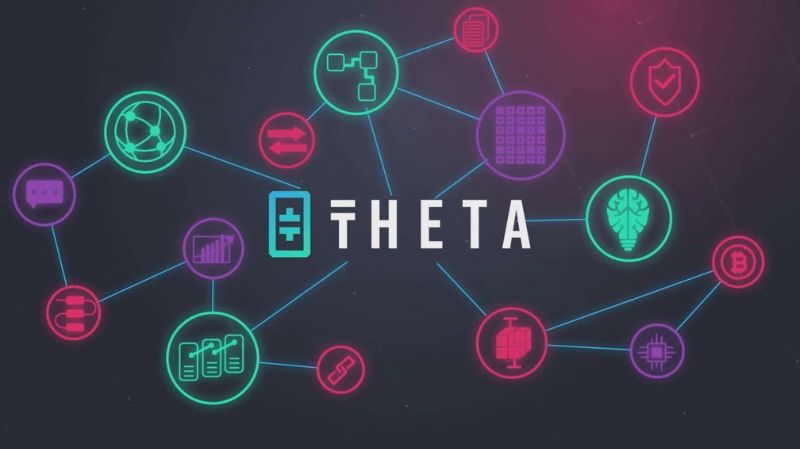The recent chaotic growth of cryptocurrencies made everyone wonder, if only for a moment, what the future of Blockchain adoption will be. Which Blockchain protocol is best for a specific business or industry? To gain answers to all of these curiosity-driven questions, one must first understand the ground realities of not only cryptos but also Blockchain protocols.
So, in this section, we will explore the differences between Algorand and Solana, both blockchain protocols, and determine what distinguishes them. Let’s get started!
Page Contents
Difference between Algorand and Solana
Founders
Silvio Micali founded Algorand in 2017. Silvio has been an MIT professor for his whole career and has received numerous accolades for his work in cryptography, notably zero-knowledge proofs.
Anatoly Yakovenko launched Solana in 2017. Anatoly worked at Qualcomm for over 13 years, developing next-generation technology for phones like the ones some of you use to watch videos.
Silvio was motivated to design Algorand after hearing about Ethereum founder Vitalik Buterin’s proposed blockchain trilemma of scalability, security, and decentralization. Silvio’s solution is Algorand.
Anatoly was motivated to design Solana after reading a comment titled “Caffeine-induced fever dream,” in which he understood that Bitcoin’s scalability might be expanded without sacrificing security or decentralization. Anatoly’s answer is Solana.
Algorand was established by the American software company Algorand Inc., and its development is overseen by the Algorand Foundation, a Singapore-based non-profit organization.
Solana was established by the American software business Solana Labs, and its development is overseen by the Solana Foundation, a Swiss non-profit.
Since 2018, Algorand has raised nearly $500 million in funding, mainly from governmental bodies.
Solana has also raised approximately $500 million in funding since 2018, mainly from private entities.
The main net of Algorand became live in late 2019 and is yet technically in development.
Solana’s main net, which is currently in development, will become live in early 2020. So far, so good; now let’s have a look beneath the hood.
Technology
Pure Proof of Stake is a revolutionary Proof of Stake (PoS) consensus technique used by Algorand (PoS).
A stake-based lottery is used in Pure Proof of Stake (PoS) to choose a participant node to generate a block. Any wallet can operate as a participation node, and there are currently around 1200 participant nodes. Algorand’s pure proof of stake has changed the game in the industry.
Take a look at how Algorand’s Pure Proof-Of-Stake has made a significant difference.
- It improves security because an attacker cannot predict which block will be attacked, making it impossible to trace and hack.
- It supports decentralization because no complex calculations are required, allowing anyone to participate in the consensus protocol without the need for specialist equipment or excessive energy consumption.
- Algorand transactions are simple and inexpensive, taking about 5 seconds to complete transactions with an average cost of less than $0.001, as opposed to other Blockchain protocols, which can take up to 15 seconds for transaction confirmations and up to $15 for excessive transaction fees. Algorand is both faster and less expensive.
Meanwhile, Solana employs a unique Proof of Stake (PoS) consensus technique known as Proof of History (PoH).
Proof of History (PoH) isn’t exactly a consensus method, but for the sake of simplicity, let’s pretend it is.
Blocks in Proof of History (PoH) are time-stamped by a validator node chosen depending on its stake. Anyone can become a validator node, and Solana presently has over 1,000 validates.
Staking There is no minimum stake to become an Algorand participant node, and staking is simple with the official Algorand Wallet mobile app.
Staking payouts for ALGO are now around 5% per year, and there is no lock-up time for staked ALGO. If Algorand participants try to influence the network, their stakes will not be reduced.
SOL staking payouts are now around 7% per year and staked SOL has a five-day lock-up period. Validators who attempt to influence the network will have their stake reduced.
Tokenomics
ALGO is the native coin of Algorand. It’s utilized for staking, and transaction fees, and, as of October, the first ALGO is also used for governance. However, for the time being, the scope of this governance is relatively limited.
ALGO’s maximum supply is 10 billion. Algorand Inc. and the Algorand Foundation each received 2.5 billion ALGO.
The other 7.5 billion ALGOs will be issued to Algorand’s ecosystem over 10 years, according to ALGO’s new tokenomics. Between 4 and 5 billion of these ecosystem ALGOs have already been given, with the majority going to Algorand’s early backers, who are running Algorand’s relay nodes.
Finally, only 25 million ALGO were sold in a public sale to retail investors in 2019, and almost all of these ALGOs were purchased back by the Algorand Foundation after the market dropped in 2019 and 2020.
SOL is the native coin of Solana. It’s used for staking and to pay transaction fees, and while several on-chain governance structures for Solana have been proposed, none have yet materialized.
SOL does not have a maximum supply. Its yearly inflation rate starts at 8% and drops to 1.5 % after 15 years. 50 percent of the sole used to pay transaction fees is also burned, potentially making SOL deflationary.
SOL’s original supply was 500 million, with 25% going to Solana Labs and the Solana Foundation and 38% going to a community treasury managed by the Solana Foundation. 35% are sold to private investors, whereas fewer than 2% are offered to ordinary investors.
Price Analysis and Prospects
The historical pricing of ALGO isn’t pretty. This is due in part to the fact that ALGO began trading amid the previous bull market.
Historically, the steady increase in ALGO supply has lowered its price, albeit this appears to be slowly changing.
ALGO just surpassed its initial coin offering (ICO) price of 2.40 cents, but it was swiftly knocked back as investors took profits. ALGO may set new all-time highs in the coming weeks, in my opinion.
ALGO has the potential to become a top ten cryptocurrency by market cap, especially once the selling from its expedited vesting period is through. This corresponds to a 3x to 4x increase in price, which is a reasonable long-term explanation.

The price history of SOL reveals a very different story. SOL’s growth has been exponential since it began trading, which is remarkable given SOL’s extraordinarily aggressive vesting timeline.
The price of SOL should have dropped when 95 percent of its assigned supply was unlocked on January 7th, however, this did not occur.
Because SOL’s market value is already very huge, it has far less flexibility in terms of price rises than Algorand. If SOL reaches $220 in the coming weeks, it will represent a 1000x profit for SOL’s ICO investors.

Adoption
To begin with, the Algorand wallet software has over 100,000 downloads on the Google Play Store. As a result, we may estimate that Algorand has approximately 250,000 users.
On the Chrome web store, Solana’s phantom browser extension wallet has over 500,000 downloads, implying that Solana has at least 500,000 clients.
In terms of institutional adoption, Algorand has dominated the public sector. The Algorand blockchain is being used by the SIAE, Italy’s largest copyright agency, to store its four million copyrights.
Algorand has collaborated with the Salvadoran government through Koibanx to construct the Salvadoran government’s blockchain infrastructure.
Algorand is also collaborating with the Marshallese Republic to mint their digital money, the Marshallese Sovereign.
On that topic, Algorand has positioned itself as the best blockchain for Central Bank Digital Currencies, or CBDCs, and some sources indicate that the United Stakes will base its CBDC on Algorand.
On the private front, Algorand collaborated with the startup behind the Exodus cryptocurrency wallet to issue tokenized equities on the Algorand blockchain.
Contrary to the expectations, the majority of Solana’s institutional adoption has occurred in the private sector, particularly in the cryptocurrency realm.
Conclusion
Algo sounds to be a project that would be amazing in 10 years unless you are already retired or do not need money right now. It is a fantastic project to hold for 10-15, even 20 years. In that time, the construction might be completed, the inflation would be over. However, there is a risk of becoming useless in the market. In ten years, we could have a slew of new and improved projects that would push ALGO into the background. When we talk about a project with a bright future, we are also putting the world’s improving technologies at risk.
Solana is a lot better project for today; at the very least, you know you’re holding a coin that everyone already likes and appreciates.











